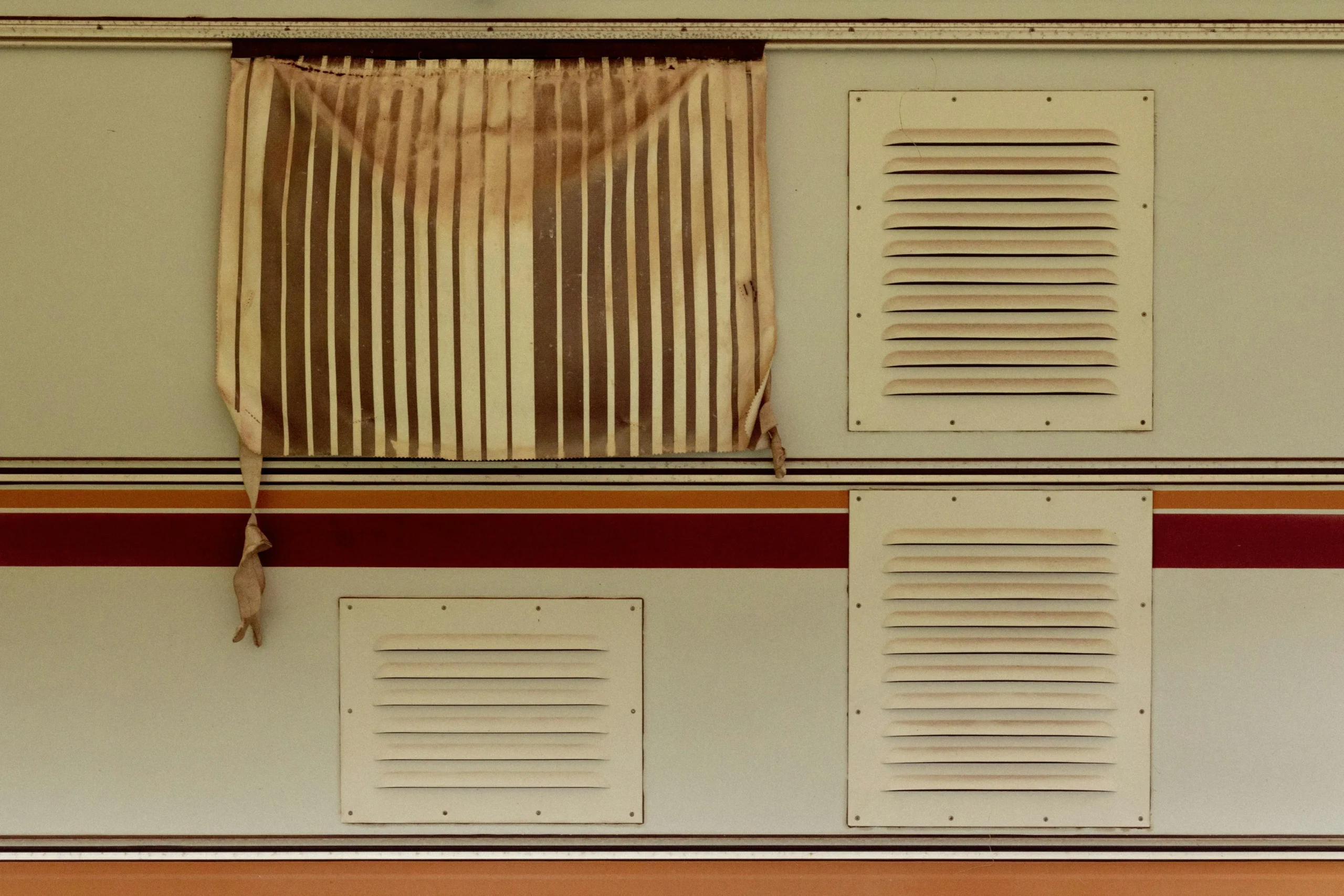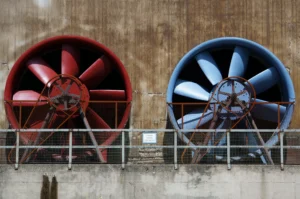Did you know that HVAC systems account for about 48% of the energy use in a typical American home? That's a significant portion of your energy bill.
With so many different types of HVAC systems available, it can be overwhelming to choose the right one for your needs. But fear not, we're here to help.
In this discussion, we will explore the pros and cons of various HVAC systems, giving you the knowledge you need to make an informed decision about which system is best for you.
So, let's dive in and discover the most suitable HVAC system that will not only keep your home comfortable but also save you money in the long run.
Traditional Central Air Conditioning
Traditional central air conditioning is a widely used and efficient HVAC system that provides cool air throughout a building or home. When it comes to energy efficiency, central air conditioning systems have come a long way in recent years. Newer models are designed to be more energy-efficient, helping homeowners save on their energy bills.
However, it's important to consider the installation cost associated with traditional central air conditioning systems. The installation cost can vary depending on factors such as the size of the home, the complexity of the installation, and the specific components required. On average, the installation cost for a central air conditioning system can range from $2,500 to $7,500.
While the initial cost may seem high, the long-term energy savings can outweigh the upfront investment. Additionally, central air conditioning systems typically have a longer lifespan compared to other types of HVAC systems, which can help offset the installation cost over time.
Ductless Mini-Split Systems
Central air conditioning systems may be a popular choice for homeowners, but if you're looking for a more flexible and efficient HVAC option, it's time to explore ductless mini-split systems.
Ductless mini-split systems are becoming increasingly popular due to their energy efficiency and ease of installation.
One of the key advantages of ductless mini-split systems is their energy efficiency. Unlike central air conditioning systems, which rely on a network of ducts to distribute air throughout the home, ductless mini-split systems deliver air directly to individual rooms. This eliminates the energy losses that can occur in ductwork, resulting in more efficient cooling and heating. Additionally, ductless mini-split systems are equipped with advanced technologies, such as inverter compressors, which constantly adjust the cooling capacity to match the desired temperature. This not only improves energy efficiency but also allows for more precise temperature control.
In terms of installation cost, ductless mini-split systems have an advantage over central air conditioning systems. Central air conditioning systems require extensive ductwork installation, which can be time-consuming and expensive. On the other hand, ductless mini-split systems only require a small hole in the wall to connect the indoor and outdoor units. This makes installation quicker, easier, and less expensive.
Heat Pumps
Heat pumps are highly efficient HVAC systems that provide both heating and cooling capabilities. When considering heat pumps, it's important to understand their efficiency and cost effectiveness in comparison to other types of HVAC systems.
In terms of efficiency, heat pumps have the advantage of being able to transfer heat rather than generating it, making them highly efficient. They work by extracting heat from the air, ground, or water source and transferring it inside or outside the building to provide heating or cooling. This heat transfer process requires less energy compared to systems that generate heat, resulting in lower energy consumption and reduced utility bills.
When performing a cost effectiveness analysis, heat pumps are often seen as a wise investment. While they may have a higher upfront cost compared to traditional HVAC systems, their energy efficiency can lead to significant long-term savings. The reduced energy consumption translates into lower monthly energy bills, making them financially advantageous in the long run.
In addition, heat pumps also offer the benefit of versatility. They can operate in various climates and conditions, providing both heating and cooling as needed. This versatility eliminates the need for separate heating and cooling systems, saving space and installation costs.
Geothermal HVAC Systems
One highly efficient and environmentally friendly option for HVAC systems is the geothermal system. Geothermal HVAC systems utilize the stable temperature of the ground to heat and cool your home. They achieve this by using a network of underground pipes filled with a refrigerant solution that absorbs heat from the ground during winter and releases it into the house. In the summer, the process is reversed, extracting heat from the home and dissipating it into the cooler ground. This geothermal energy efficiency makes these systems highly effective, with some studies showing energy savings of up to 70% compared to traditional HVAC systems.
While geothermal systems offer significant long-term energy savings, the initial installation cost can be higher compared to conventional systems. The geothermal installation cost is primarily due to the need for drilling or excavation to install the ground loop system. However, the high efficiency and low operating costs of geothermal systems can help offset the initial investment over time.
Geothermal HVAC systems also have a longer lifespan compared to traditional systems, with the ground loop system lasting up to 50 years and the heat pump unit lasting up to 25 years. Additionally, these systems produce no greenhouse gas emissions and have minimal maintenance requirements, making them an environmentally friendly choice.
Window Air Conditioners
Window air conditioners are a popular choice for cooling individual rooms or small spaces. When it comes to energy efficiency, window air conditioners have made significant advancements in recent years. Many models now come with energy-saving features, such as programmable timers and adjustable thermostat settings, allowing you to optimize energy usage and save on electricity bills. Additionally, some models are equipped with energy-efficient compressors and fans that consume less power while still delivering effective cooling.
The installation process for window air conditioners is relatively simple. To begin, you need to select a suitable window for installation. Most window air conditioners are designed to fit in standard-sized windows, but it's important to measure the window opening beforehand to ensure a proper fit. Once you have chosen the window, you'll need to remove the window sash and secure the air conditioner in place using mounting brackets or support brackets. It's crucial to follow the manufacturer's instructions during the installation process to ensure proper functionality and avoid any potential safety risks.
Portable Air Conditioners
Portable air conditioners offer a convenient and versatile cooling solution for various spaces and situations.
When it comes to energy efficiency, portable air conditioners tend to be less efficient compared to other HVAC systems. This is primarily because of their design, which requires them to have an exhaust hose that must be vented outside.
The installation process for portable air conditioners involves positioning the unit near a window or a vent where the exhaust hose can be connected. While the installation is relatively simple, it's important to note that the exhaust hose needs to be properly sealed to prevent hot air from entering the room. Additionally, portable air conditioners require a power outlet to operate, which may limit their placement options.
When choosing a portable air conditioner, it's essential to consider its energy efficiency rating. Look for models with a high Energy Efficiency Ratio (EER) as they provide more cooling power while consuming less energy.
Packaged HVAC Systems
Packaged HVAC systems are comprehensive heating, ventilation, and air conditioning units that are designed to provide efficient climate control for larger spaces or buildings. These systems offer several advantages, making them a popular choice for commercial and industrial applications.
One of the main advantages of packaged HVAC systems is their compact design. Unlike split systems, which consist of separate components, packaged systems integrate all the necessary components into a single unit. This not only saves space but also simplifies installation and maintenance.
Additionally, packaged HVAC systems are highly efficient. They're equipped with advanced technology such as variable speed compressors and energy recovery ventilation, which help to optimize energy consumption and reduce operating costs. Moreover, these systems are designed to provide consistent and reliable performance, ensuring a comfortable indoor environment.
Despite their advantages, packaged HVAC systems also have some disadvantages. One of the main drawbacks is the limited flexibility in terms of zoning. Since the entire system is contained within one unit, it may be challenging to independently control the temperature in different areas of the building. This can lead to energy wastage and discomfort for occupants.
Another disadvantage is the potential for higher upfront costs compared to split systems. The integrated nature of packaged systems often requires additional customization and engineering, which can increase the initial investment.
Hybrid HVAC Systems
Hybrid HVAC systems combine the benefits of both traditional heating and cooling methods with innovative technologies to provide optimal comfort and energy efficiency. These systems utilize a combination of a traditional furnace or boiler for heating and an air conditioner or heat pump for cooling.
One of the advantages of hybrid HVAC systems is their ability to adapt to changing weather conditions. In mild weather, the heat pump can efficiently heat or cool the space, while in extreme weather conditions, the traditional furnace or boiler takes over to provide the necessary heating. This flexibility allows for significant energy savings compared to traditional heating and cooling systems.
Additionally, hybrid HVAC systems often come with advanced controls and smart thermostats, which allow for precise temperature control and scheduling. This can further enhance energy efficiency and reduce utility bills.
However, there are some disadvantages to consider. Hybrid HVAC systems can be more expensive to install compared to traditional systems. Additionally, the complex nature of these systems may require specialized maintenance and repairs, which can add to the overall cost.
Conclusion
In conclusion, when considering HVAC systems, it's important to weigh the pros and cons of each option.
Traditional central air conditioning offers effective cooling for larger spaces but may require extensive ductwork.
Ductless mini-split systems provide flexibility and energy efficiency but are limited in their cooling capacity.
Heat pumps offer both heating and cooling capabilities but may not be as efficient in extreme temperatures.
Geothermal HVAC systems are highly energy-efficient but can be costly to install.
Window and portable air conditioners are affordable options for smaller spaces.
Packaged and hybrid HVAC systems offer a combination of features but may be more complex and expensive.
Ultimately, the choice of HVAC system depends on individual needs and preferences.


